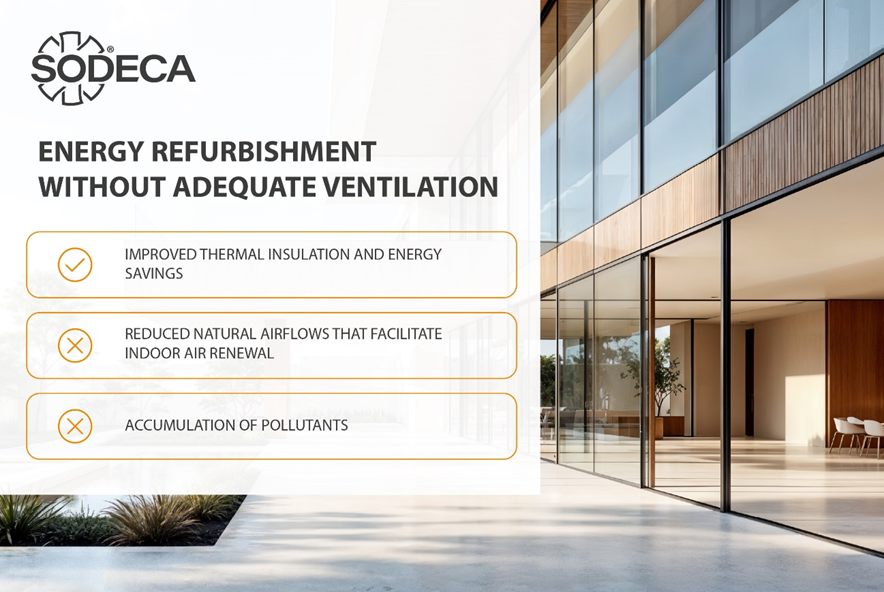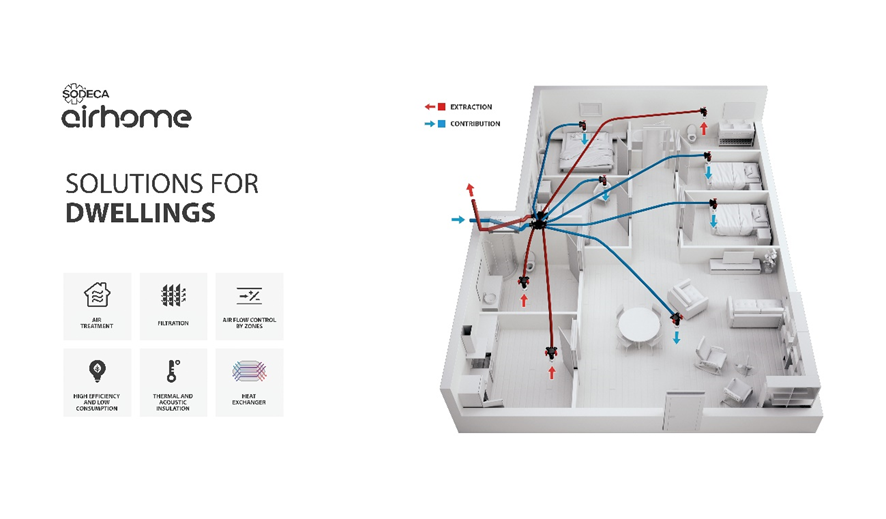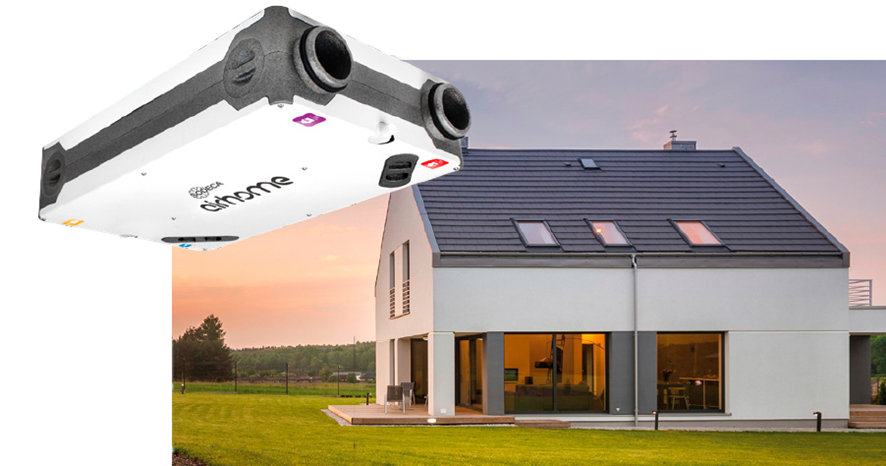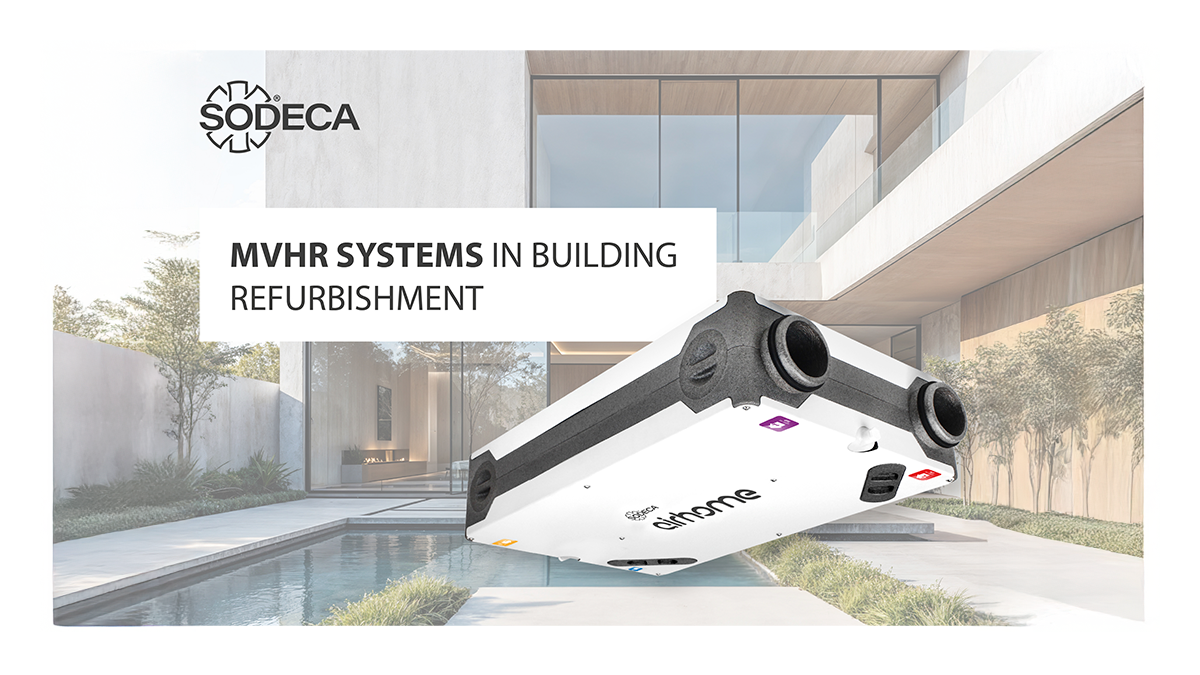The energy renovation of buildings has become a central focus in efforts to improve energy efficiency and reduce carbon emissions. In Spain, this challenge is particularly relevant, as according to data from the Housing and Land Observatory, more than 67% of the building stock is residential, and a significant proportion of these buildings were constructed before the Technical Building Code (CTE) came into effect in 2006. These properties often suffer from poor thermal insulation, inadequate or non-existent ventilation systems, and insufficient airtightness, all of which contribute to high energy consumption and habitability issues.
The National Integrated Energy and Climate Plan (PNIEC) foresees the renovation of 1,377,300 homes in Spain between 2021 and 2030. This process will follow a sustained growth trajectory, reaching 300,000 renovated homes in 2030, leading to significant energy savings and improved efficiency in the housing sector.
However, if not planned with a comprehensive approach, building renovations can lead to unforeseen problems. Enhancing thermal insulation and sealing building envelopes reduce natural air currents that previously helped renew indoor air. While this is essential to minimise energy losses, it can also result in the accumulation of pollutants such as CO₂, Volatile Organic Compounds (VOCs), and radon, as well as increased humidity levels. Ultimately, this not only affects air quality but also has implications for the health of occupants and the structural integrity of the building.

Among the most common issues in poorly ventilated buildings or inadequately planned renovations are damp problems. Moisture infiltration through the building envelope, capillary rise of groundwater, and humidity generated from daily activities such as cooking, showering, or even breathing are frequent causes. These issues become more severe when cold surfaces in homes cause water vapour to condense, encouraging the growth of mould and the corrosion and deterioration of materials. The consequences are not merely aesthetic or structural; they also pose significant health risks, as prolonged exposure to damp and poorly ventilated environments is linked to respiratory diseases and allergies.
Beyond damp issues, the accumulation of indoor air pollutants due to inadequate ventilation presents a critical health risk for residents. According to the WHO, up to 14% of lung cancer cases worldwide are related to radon exposure. Moreover, fine particulate matter (PM2.5) has been identified as one of the most hazardous indoor air pollutants. In Spain, a recent study by the General Council of Technical Architecture (CGATE) found that 71% of the homes analysed exceeded the CO₂ concentration limits set by the CTE, highlighting the urgent need to improve ventilation in the residential sector.

The most effective solution for achieving a successful energy renovation is the incorporation of Mechanical Controlled Ventilation with Heat Recovery (MCVHR) systems. These systems ensure a constant and controlled renewal of indoor air, preventing pollutant accumulation and removing excess humidity. Furthermore, when combined with heat recovery, these systems not only improve air quality but also enhance the energy efficiency of homes. In winter, the heat from the extracted indoor air is transferred to the fresh incoming air, while in summer, the process can be reversed to cool the incoming air. This reduces reliance on heating and cooling systems, significantly lowering energy costs.
The AIRHOME by SODECA is a dual-flow ventilation solution with heat recovery, designed to renew indoor air by extracting it from humid areas such as kitchens and bathrooms and transferring the recovered heat to the clean air entering dry areas of the home.

Mechanical Controlled Ventilation with Heat Recovery also excels in filtering outdoor air, an essential feature in urban environments where pollution is an increasing concern. High-efficiency mechanical filters remove airborne particles, allergens, and other contaminants. This air treatment ensures that the introduced air is clean and safe for occupants.
In conclusion, energy renovation projects must go beyond simply improving insulation and energy efficiency. The installation of MCVHR systems with heat recovery and advanced filtration is essential for addressing indoor air quality and health concerns. Without proper ventilation planning, the benefits of renovation may be overshadowed by moisture problems and indoor pollution, compromising both occupant health and building durability. Incorporating these solutions not only ensures healthier indoor environments but also represents a firm step towards a more sustainable and resilient building model.
